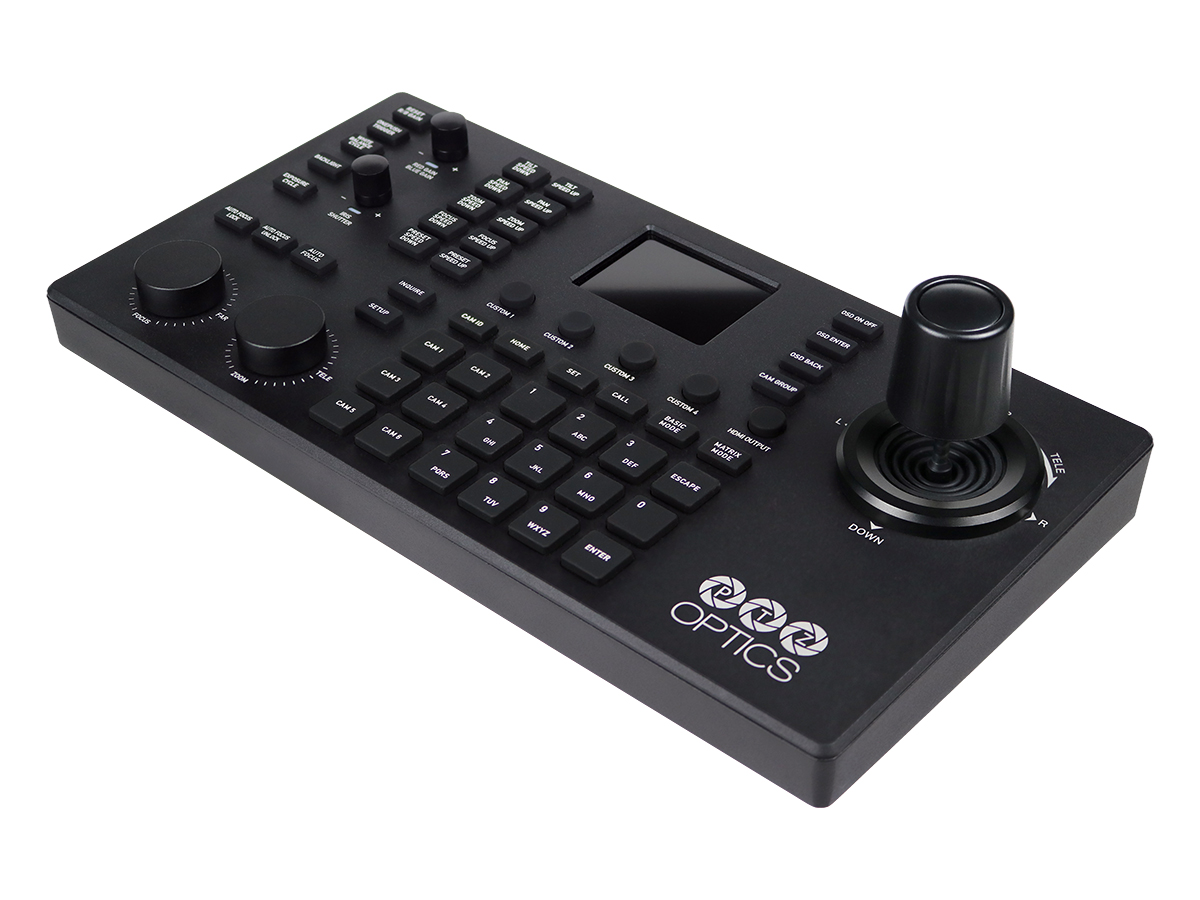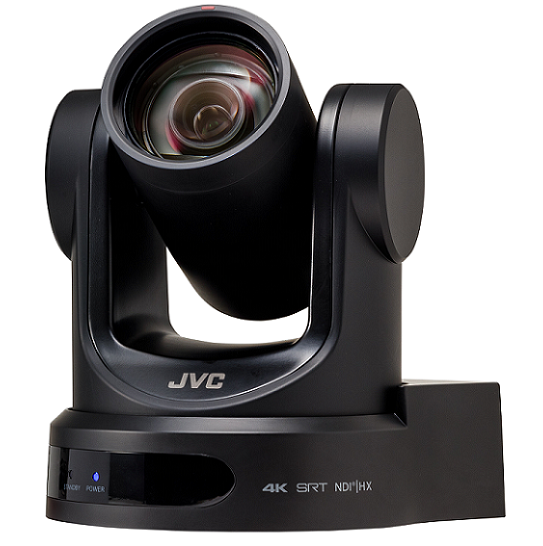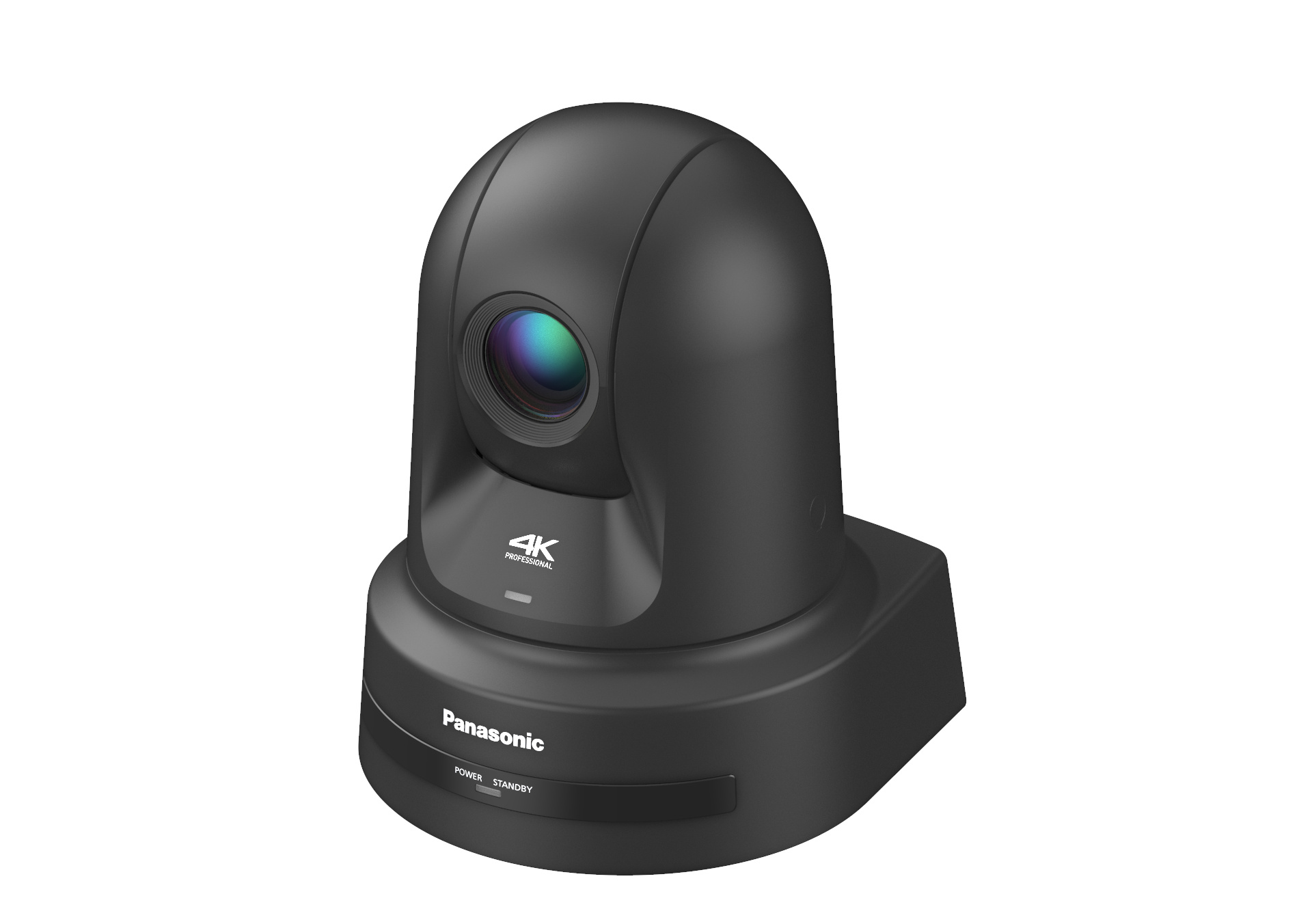When you mention PTZ cameras, many people have an outdated image of a static camera with grainy picture quality, leaving users frustrated from the hassle and time it takes to operate. However, with recent enhancement of sensors, feature sets, lenses, and image processors, PTZ cameras have advanced to a place where they are now starting to be used in conjunction with professional grade studio cameras—and you might be hard pressed to notice the difference.
“It used to be that the PTZ was considered somewhat inferior in terms of picture quality,” admitted Jim Jensen, senior category manager, remote production systems for Panasonic. “But as of recent, they have really improved to the point that they are now being used in more demanding settings.”
With the improved picture quality and versatility of the product, many settings, including houses of worship, higher education facilities, and corporate meeting rooms, are turning to the some of the latest PTZ cameras to help produce high-quality steaming of their events and enable internal teams to meet and collaborate virtually with ease.
Unique Angles
It's important to fully understand how you will use your PTZ cameras before committing to a purchase, because this will help with making decisions about features like image stabilization, light sensitivity, zoom range, and lens quality. Not all PTZ cameras are created equal, and current models can range in price anywhere from $2,000 to $15,000.
[Panasonic Expands Its Immersive Entertainment Collaboration with AREA15]
“In this area, you really do get what you pay for,” said Mark Siegel, vice president of business development for Key Code Media. “Mind you, some of the more cost effective PTZ cameras are very capable based on the application. As an example, I can buy many more cameras at a lower price than a single high-quality camera, and one may not need all the features of that one camera. By having more, it gives many more viewing angles.”

The small size of PTZ cameras has cemented them as a versatile solution that provides flexibility with how and where they can be used. “From the inside of a race car, the top of a basketball net, in a conference room, courtroom, church, schoolroom, and of course, a studio—you can virtually put a PTZ camera anywhere you can get a CAT cable these days,” said Siegel.
Because of their size, PTZ cameras can be installed in areas that are difficult to reach areas, as well as within areas that would be unsafe or impossible for a camera operator to be placed. Many cameras can even be obscured to the point where the user barely notices their presence, helping them blend in or compliment the venue in which they are installed.
Pick Your Features
Auto tracking, a fast-developing area within PTZ cameras, removes the need for operators and relies on built-in controls to guide the camera by movement and sound. “With automated camera control, no camera operator is needed and no one needs to pan, tilt, or zoom the camera from a control panel,” said Rony Sebok, CTO of 1 Beyond. “Intelligent cameras, like the AutoTracker 3, have all the automation built into them. This camera will smoothly track a presenter using facial and motion detection.”

1 Beyond also offers Automate VX, an intelligent camera switching solution that will aim the camera based on the source of the audio. “These voice-activated switching solutions can replace an entire camera crew, and intelligently switch from camera to camera to follow a conversation in a room and highlight the active speaker,” Sebok added.
In October, Panasonic introduced a new line of integrated PTZ cameras focused on advancing content creation and streamlined remote production workflows within home office, corporate, education, and live content creation environments. “With this new line of PTZs, we took a close look at what customers were telling us,” Jensen said, “and they really wanted low to mid-PTZs to be able to take them to the next level. That’s really where I see our PTZs being different.”
There are five cameras in the new line. Three models (AW-UE40, AW-UE50 and AW-UE80) offer a new direct drive system that delivers accurate pan and zoom capabilities while assuring quiet operation for use in virtually any video shooting situation. The UE80 offers exclusive features like 4K 60p resolution, high bandwidth 100 Mpbs NDI for transmitting high-quality, low latency video, and FreeD protocol support that allows users to incorporate virtual studio sets and elements into remote productions.
The more affordable models (AW-HE20 and AW-UE20) are tailored for companies looking to expand capabilities for remote employees by giving them access to high quality video streaming, making it perfect for small office spaces or at-home work settings. The new design features a wide 71-degree viewing angle and 12x optional zoom.
[TEKVOX Adds 4K Videoconferencing, PTZ Cameras to Line]
PTZ camera technology has been advancing dramatically, and manufacturers are quickly working to incorporate new tends into their products. One feature many manufacturers highlighted was ePTZ, or electronic PTZ, which uses high-resolution image cropping to replace the physical pan, tilt, and zoom functions of the camera. This process can also offer limited zoom before there is image distortion, making it more effective in smaller, intimate spaces. As AR and AI capabilities continue to expand, current PTZ products will be pushed to their limits within a virtual setting and will need to look for new ways to adapt.
Under Control
In many settings, you won’t have a professional tech team readily available to manage and operate your technology. With this in mind, many users are turning to the PT-JOY-G4 joystick from PTZOptics, which provides the versatility to switch between network and serial control, making it ideal for houses of worship or conference room spaces where volunteers or employees are often the ones operating the technology.

With the ability to operate in safe mode, the product can grow with the abilities of your team. It’s also a gamechanger for producers who want to control remote cameras through a web interface, giving them the ability to produce content from any location.
“It’s one of the only joysticks that you can use with an external monitor,” said Stephen Heywood, broadcast engineer for PTZOptics. “I can switch cameras inside of it. I can frame up shots. If I’m a TD, I don’t need to be in front of the switching solution. I can just have a monitor hooked up to the joystick and be ready for whoever is producing.”
Additional PTZ Options
• Apantac AP-1080P-PTZ-20x–Compatible with all leading videoconferencing software, it offers 20x optical zoom and 2x digital zoom with 61-degree FOV.

• JVC KY-PZ400—Integrated Vertical Interval Time Code (VITC) with Network Time Protocol (NTP) allows multi-camera sync for live event production.
• Lumens VC-TR1–Advanced facial detection and camera tracking technology utilizes a dual-camera design to monitor the presenter and the full width of the stage simultaneously.
• PTZOptics PT30X NDI–Features include broadcast frame rates and NDI video output, which are needed by many video production professionals.
• Sony BRC-X400, SRG-X400, and SRG-X120–Sony’s Version 3.0 update adds Secure Reliable Transport (SRT) protocol, which makes them ideal for a live events, education, and remote production.

